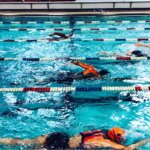Have you ever noticed on a long run or ride that your heart rate continues to slowly increase with no change in your pace or output? Despite the fact that your speed and power remain constant, your heart rate climbs upward, making you wonder what the reasoning behind this is.
The reason is simply defined as cardiac (cardiovascular) drift. Cardiac drift is defined as the natural increase in heart rate that occurs when running with little or no change in pace. This can happen during any component of triathlon training, including both running and cycling. Experiencing cardiac drift can be an early signal that things like core temperature, hydration status, and electrolytes are off balance.
What causes cardiac drift in athletes?
Dehydration and heat accumulation are typically the two primary causes of cardiac drift.
Why does cardiac drift happen?
Cardiac drift happens because your body is naturally pushing blood to the surface of the skin to cool off. When you’re exercising in hot and humid conditions for long periods of time, the body is forced to work harder to keep cool by diverting blood to the skin. This causes your heart rate to increase in order to circulate the blood more quickly. With the thickening of the blood, the heart has to pump harder and faster to effectively circulate it.
How can athletes avoid cardiac drift?
One key way to prevent cardiac drift is to avoid overheating. There are several ways to help avoid overheating during training sessions. First off, dress appropriately or consider scheduling an indoor training session with air conditioning or a fan. This will allow your body to more easily regulate temperature, ensuring that heat accumulation doesn’t occur during your training session.
As with any training element, hydration is key in regulating body temperature. Taking in the right fluids along with maintaining a proper balance of electrolytes will help keep your body’s systems functioning properly, ultimately decreasing your chances of cardiac drift.
Fortunately for triathletes, cardiac drift can be largely avoided with two simple measures. Making sure that you’re wearing the right training gear and staying properly hydrated are two simple, yet incredibly effective ways to ensure you do not experience cardiac drift while you are training for your next race.
Looking for more tips to ensure you’re prepared for race day? Contact me today to set up a free coaching consultation!
Train Right, Tri Right!
Coach MJ







